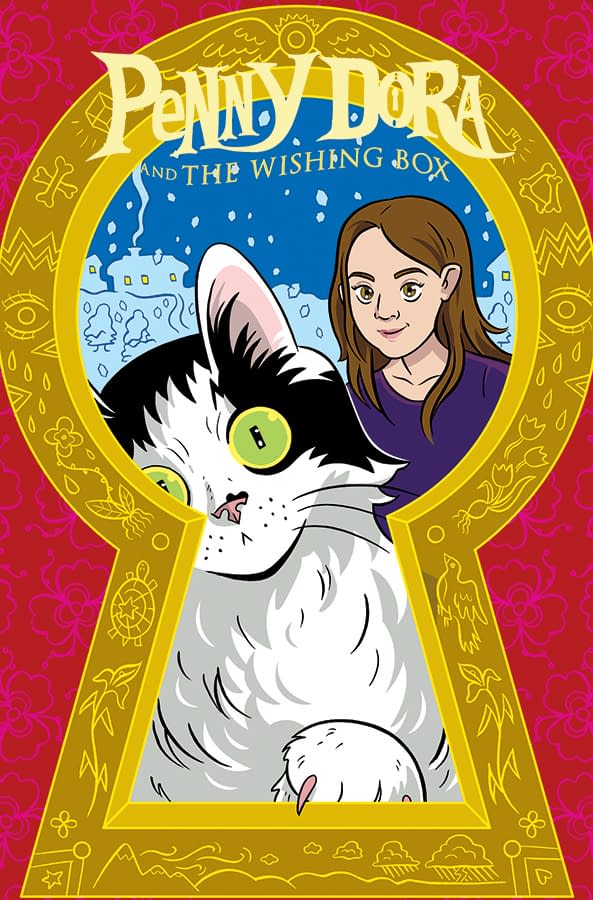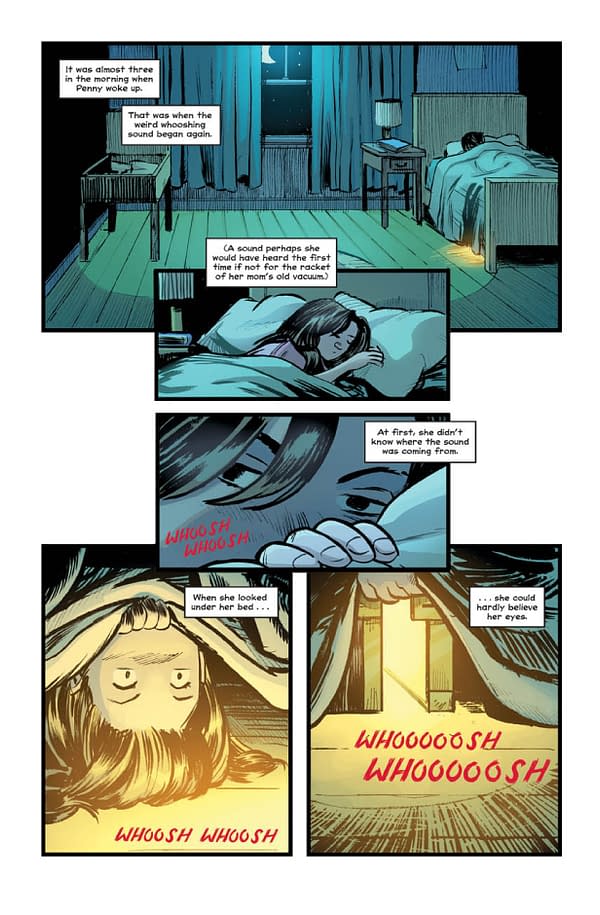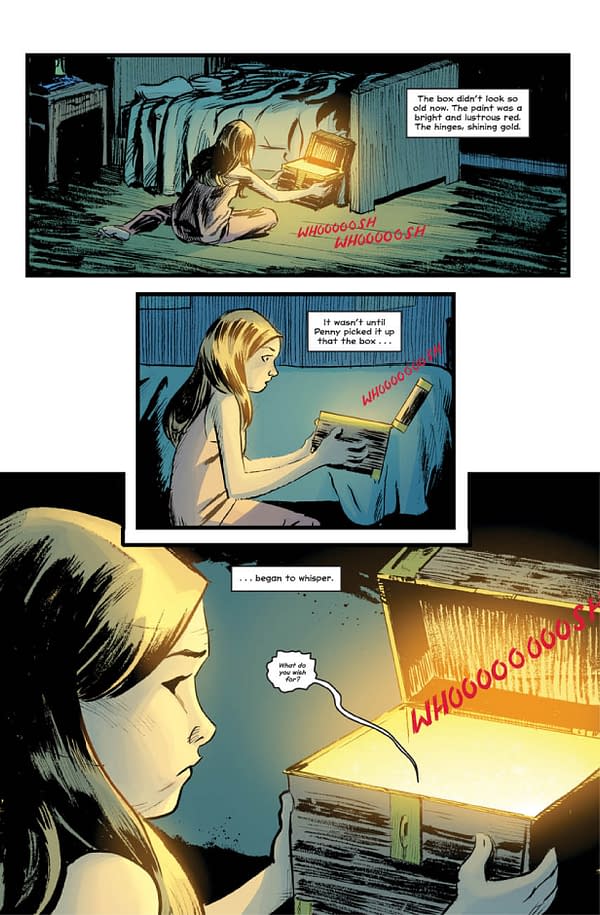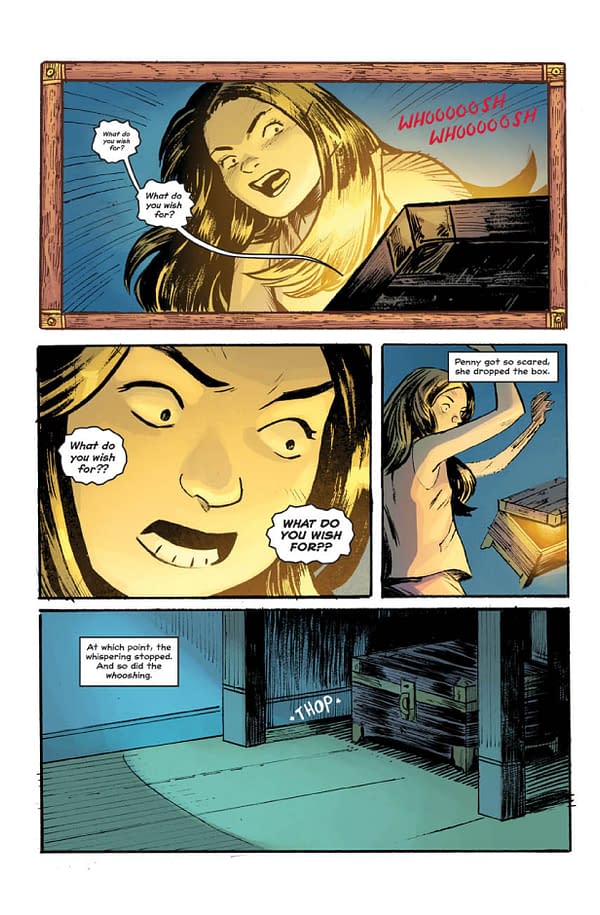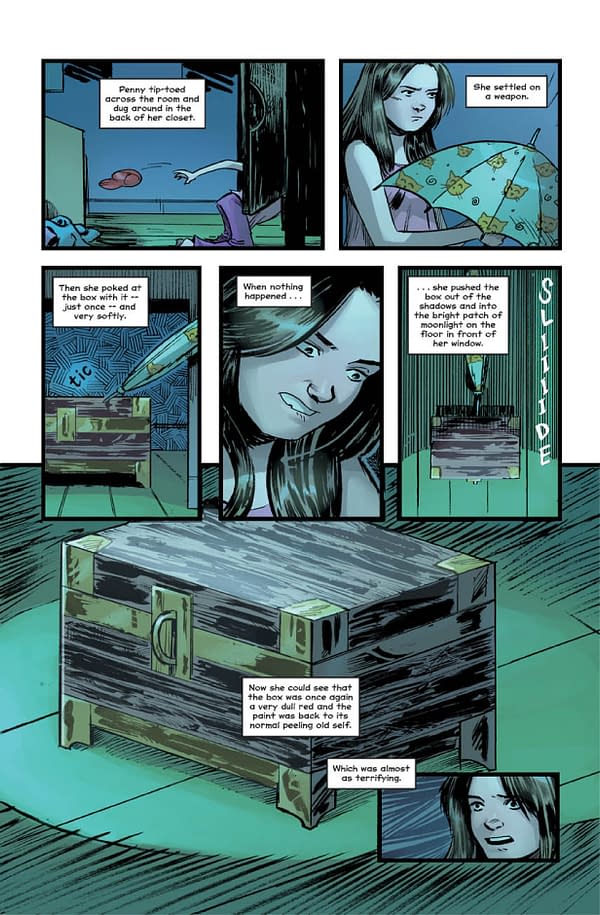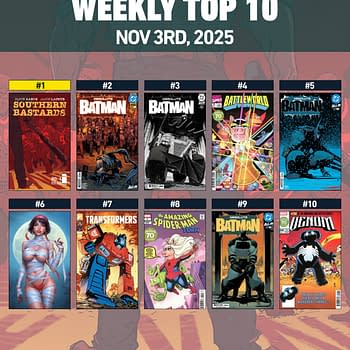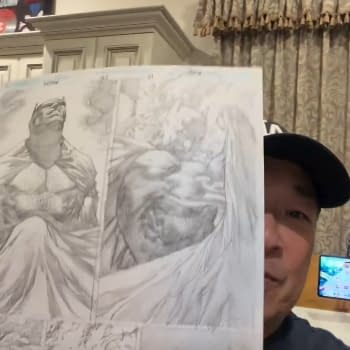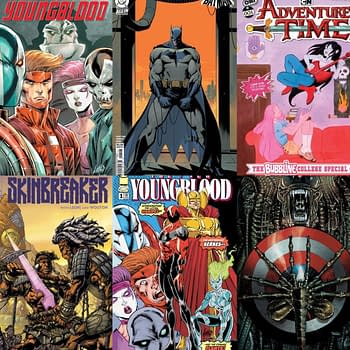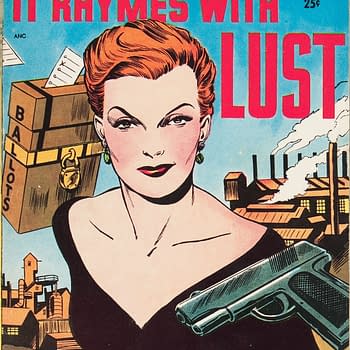Posted in: Comics, Recent Updates | Tagged: All Ages Comics, Comics, entertainment, image comics, Michael Stock, Penny Dora, Penny Dora and the Wishing Box, Sina grace
The Dangers Of Wish Fulfillment In Penny Dora From Image This Week – Talking With Michael Stock About A Creepy Old Box
By Alex Wilson
Penny Dora and the Wishing Box from Image Comics, featuring the art of Sina Grace and the writing of Michael Stock, stands as a charming all ages story about a girl who receives a magical box from an unknown recipient and a cat who can't get enough of ham.
The story creates a charming world readers can't help but hold fondness for. We get the picture of a girl, Penny, who wishes for reconciliation between her parents but her father doesn't seem to be around very much. I found myself skipping over Thanksgiving and already feeling a fondness for the snow covered nights of Christmas.
Sina Grace's art has never looked better than in this book. I follow his art fairly closely and his art, along with the colors, make this book pop from the page and match the story perfectly. You couldn't have asked for a better art team.
I had a chance to sit down with Stock and ask a few questions about Penny Dora and the world he and his daughter have created.
Alex Wilson: Penny Dora is a reference to the Box of Pandora. What about this myth drew your attention?
Michael Stock: The first issue of Penny Dora and the Wishing Box is actually based on a short story my daughter, Nico, wrote when she was just 8 years old! (She's 13 now, fyi.) And it's actually somewhat of a mystery to us both at this point whether it was inspired by her hearing about Pandora's Box at school or if this was something that just came out of her 8 year old mind…
After all, kids are re-inventing the wheel every day. (One of the more mind-blowing lessons I've learned as a parent.) Nico's half-page story (which was printed in her school newspaper to the raised eyebrows of a number of parents) was something straight out of The Twilight Zone. Only at age 8, she hadn't yet even seen a single episode!
Anyway…Nico read her story on my Part Time Punks radio show on KXLU 88.9FM here in LA shortly after she wrote it. Since then, from time to time, I will get a call from a listener who will ask 'Whatever happened to the little girl and that creepy old box?' One of these calls came last winter, shortly after Nico had given me Coraline and Courtney Crumrin to read. I started thinking about what a great set up her short story would be for a comic series; a sort of modern fairytale starting with the question: What if Pandora's Box was entrusted to a little girl growing up in Southern California in 2014?
In Nico's original story (which we will be re-printing in the backpages of the 2nd issue) her heroine's name was Katy. So one of the first things I did was change her name to Penny Dora. Something which will prove to be part of a greater plot point uncovered in the 2nd arc which may very likely be called Penny Dora & The Rest Of Pandora's Daughters.
AW: The story starts off on Christmas and soon passes. Will the holidays remain a theme during the series? Why, why not?
MS: First off, for pragmatic purposes, it made the most sense to start the story at Christmas. This was the best time for a mysterious wrapped package to show up on a little girl's doorstep after all.
But, more importantly, and in the broader sense, I felt it was important for the story about wish fulfillment to start off in the so-called 'season of giving' — or, perhaps more accurately described as 'the season of GETTING'. And this is the sort of sardonic/satiric sense of humor that runs throughout the book. Especially in the 2nd half, when Penny makes the mistake of loaning the box to her friend Elizabeth overnight…who by morning has remade her home into a very literal castle where she presides over her kingdom as Princess Elizabeth…
(Setting the start of our story at Christmas has also allowed Sina and I to have some fun showing the strange, and shall we say…subtle seasons that us residents of Southern California enjoy.)
The answer to the 2nd part of yer question is YES…holidays will continue to play a major role in the book. Why? Because, as a father, I've learned all over again that children mark the passing of time by the holidays, not the weekends or days of the week–even once they're in school, maybe moreso. Of course all us adults have to do is break out those dusty photo albums (or scroll through our iPhoto libraries) to be reminded of the same thing. The difference there, I guess is that's how adults keep track of times past, and how kids keep track of times to come!
Anyway, all to say: holidays have a lot of power over all of us, young and old. This is something that the mysterious force inside the Wishing Box is well aware of…so you can expect it to be acting up around holidays even more than its everyday hijinx. Does this mean the box itself is evil? Well, that too is a question at the very heart of the story, and yer gonna hafta read on to figure out the answer….
AW: Penny desires for her parents to be brought together once more and she receives a wishing box. Do I smell foreshadowing?
MS: You have caught the whiff, yes. The 2nd arc of the book, which I'm working on now, focuses on two things: (1) some of the origins of the Wishing Box (true, rumored and otherwise); and (2) the testing of our hero, Penny Dora. These tests are conducted by the Box's previous keeper, Kira, aka the li'l Goth Girl we start seeing lurking in the backgrounds and edges of panels in issue #2. And are as much about Penny Dora testing the Box as Kira testing her!
One of the 1st tests Penny Dora is given is to wish for whatever she wants most in her life. The catch being: she can only have it for 24 hours. (Well, the first catch; she'll soon find out there are many, many others.) Anyway, as you guessed/slash/smelled, that wish is for her parents to be back together again. That doesn't actually play out like hoped, she soon finds out another variation on the old adage: 'be careful what you wish for.' A theme we will return to many times in the book in a variety of ways.
AW: What do you want readers to take away from Penny Dora and the Wishing Box?
MS: It's funny, y'know, when I read this question I realized it was a variation on the first question Nico asked me when I told her I was going to turn her story into a comic book. Only the way she asked it was: "But Papa, what the lesson be? There's always gotta be a lesson in a comic book. That's how they work best."
One of the lessons Penny Dora learns in the first story arc is that being the keeper of the Wishing Box is less about getting all the things she ever dreamed of and more about keeping the Box out of the wrong hands. Which of course is a variation on Stan Lee's great lesson to us all: 'with great power, comes great responsibility.' Something it never hurts to think about again once in awhile, young or old.
But on another level, this book is about the importance of parents and their children continuing to share ideas, and continuing to share books. I guess that's kinda more meta-level stuff, but this is why it's been so important to me to get the story behind the story of PENNY DORA out there — how it began as a story written by an 8 year old girl, which is now a comic book that we continue to work on together, father and daughter.
So I guess what I hope most of all is that Penny Dora is the kind of book that kids will recommend to the adults in their lives (parents, kid-sitters, big brothers & sisters) and that adults, in turn, will pass along to the littler ones in their lives. We're not being colloquial here when we refer to it as an "all ages" book.
AW: You can check out Penny Dora and the Wishing Box this week in comic book shops. Consider buying a copy for your son or daughter but also flip through the pages yourself. You'll find a fun idea executed in a unique way.
Penny Dora and the Wishing Box arrives on November 5th in shops from Image Comics



